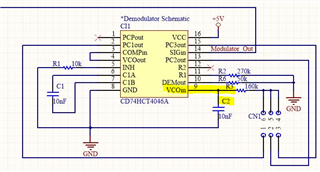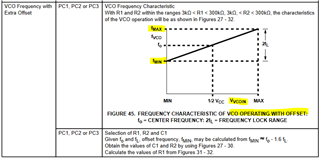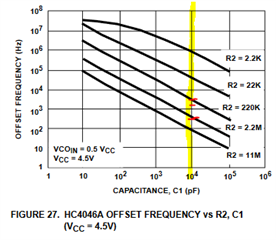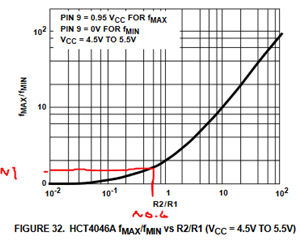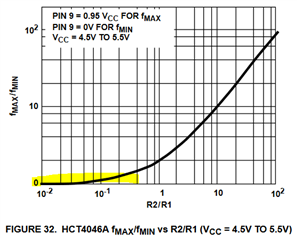Other Parts Discussed in Thread: CD74HC4046A,
Hello,
I hope you are having a nice day,
We have tried to make a modulator - demodulator pair, like the one shown in document Application Report SLAA618 called "Implementation of FSK Modulation and Demodulation using CD74HC4046A ", but we are using the CD74HCT4046A.
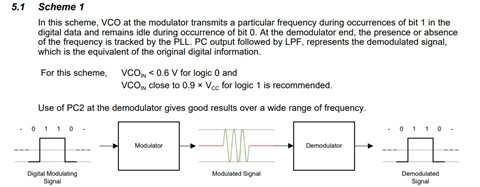
We need to implement a FSK Modulation and Demodulation application, with 2 data "0" and "1", 0 = 1.6 kHz and 1 = 2kHz of frequency respectively with a Bitrate of 400Bits/s, we have consulted the Application Report SLAA618, following this documentation, we try to implement a Modulator and Demodulator, the Modulator works correctly but the demodulator does not, we have changed the values of some components that we think are suitable for our application, as shown in the following image.
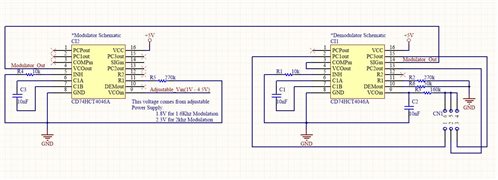
For the Modulator Circuit VCOin Pin we used two voltage values 1.83V for a 1.6kHz signal and 2.3V for a 2kHz signal, “0”=1.83V and “1”=2.3V, for the moment we just input a fixed voltage value to the VCOin pin of the Modulator, either 1.83V or 2.3V.
We hope that if in both demodulator and modulator circuits we use the same resistor and capacitor values on pins R1, C1A and C1B, the output voltage at DEMout of the Demodulator circuit will be the same value of voltage introduced in VCOin of the Modulator Circuit.
For example, if we use a constant 2.3V value in VCOin of the Modulator circuit, the logical thing would be that in the DEMout Pin of the Demodulator circuit we have a signal with a constant voltage of 2.3V, but this is not the case, in the image “IMG001.JPG” we show the behavior we have of the Demodulator Circuit.
In the images "IMG002.JPG" and "IMG003.JPG", the behavior of the DEMout output signal of the demodulator circuit is shown, when a 400hz signal ranging from 1.8V is input into the modulator circuit on the VCOin pin at low level and at high level of 2.3V.
Do you know why the signal of our Demulator circuit on the DEMout pin has this behavior?
We would like you to help us achieve two things; the first one to improve the signal of the Demodulator Circuit of the DEMout pin, make it equal to the signal that enters the VCOin pin of the Modulator Circuit, the second to know how we can expand the voltage range for the frequencies with which we want to work, currently 1.83V for a 1.6kHZ signal and 2.3V for 2kHZ, gives us a voltage range of .47V, this range or voltage difference is what we would like to make bigger.
I appreciate the time given to this request, have a good day.
Best regards.
Alejandro Ortiz


